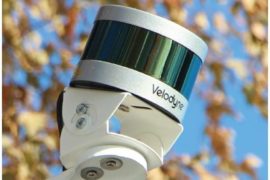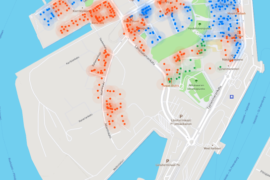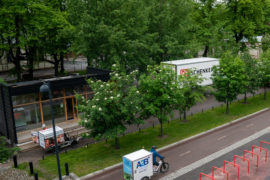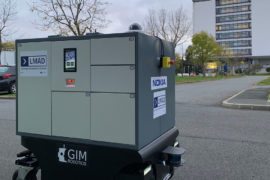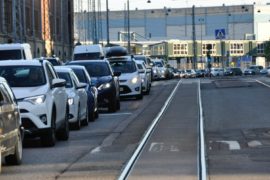First, data is collected to detect road crossings. Later, the intention was to send alerts nearby drivers to prevent a potential collision but due insufficient amount of data and users, the pilot did not proceed to the next phases.
The technology can alert drivers even if the pedestrian is located behind an obstacle and the driver can’t see him. The incident data can also be used by the city itself to improve the city road safety infrastructure. Jätkäsaari Mobility Lab supports the pilot by helping in finding test users to use the application which is available both for Android and iOS. The application also utilises Helsinki’s open data to map whether road crossings are done at crosswalks or traffic lights.
Key functionalities that were planned:
Pedestrian mode
– Road safety behavior stats to improve on-road behavior
– Real-time alert in case the user watches the smartphone when approaching a road
– Volume control – Adjusting headphones volume near roads
Driver mode
– Collision detection alert – Alert drivers on possible collision with pedestrians, even when the pedestrian is behind obstacles and the driver cannot see him
– Alerting drivers in possible collision situations
– Real-time notification when entering crowded pedestrian areas
City road safety dashboard
– Aggregated and statistical data for the city for better planning the physical infrastructure for pedestrians’ road safety (e.g. crosswalk planning, bicycle trails, traffic light optimization)
